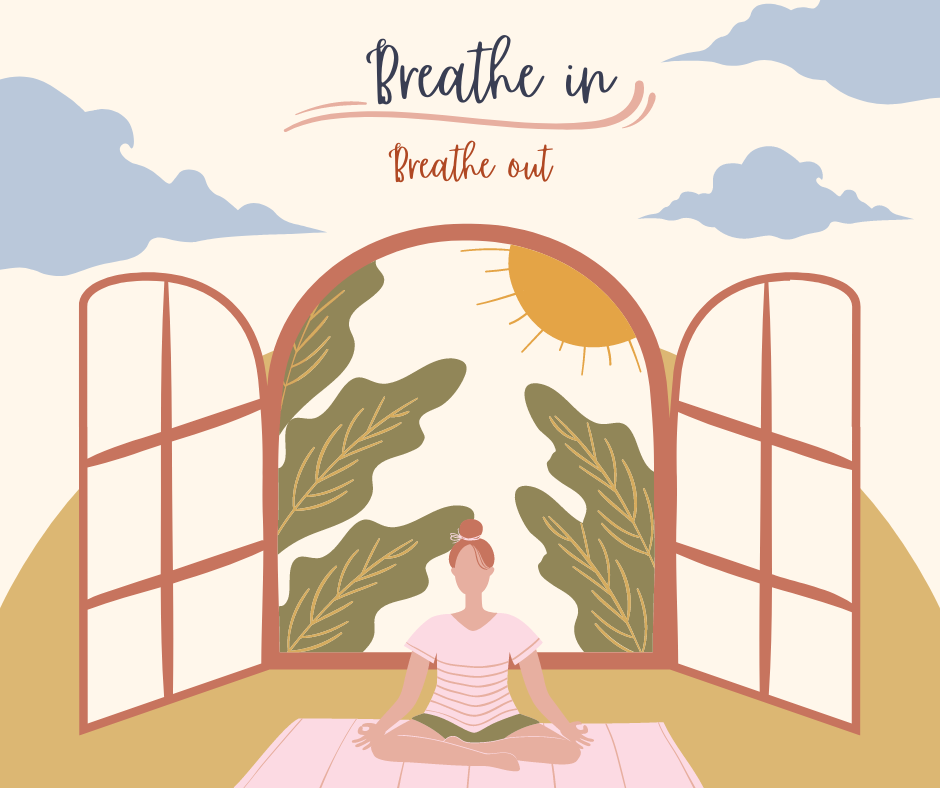Breathe

All you need to do is breathe!
In the therapy room, I often hear stories of overwhelm, worry, sadness and stress. The circumstances around the emotions are different, yet the physical response is very similar. When emotions are intense, the heartbeat is fast, the face is overheating, and the breath becomes shallow. The desire to overcome the emotion is very strong; I get it...; but before we can tame it, we must first calm the body. And to do that, all you need to do is ... breathe.
Let’s first see how it works. In response to strong emotion, your body attempts to regulate itself: the stress hormones elevate the heart rate and increase the respiration rate, creating shallow, short breaths. The blood rushes to your hands and feet (which is why you may feel your palms sweat) to prepare you to fight or flight. If there is a real danger and you need to flee the scene (like if you see a lion), you will be grateful for the ability of your body to do this, as it increases your strength to run as fast as you can. But when there are no real lions around, such a response exhausts your body for no good reason.
In the hot room of Bikram yoga (when the room is heated to 100F), your body responds to heat just like it responds to anxiety. It is very hot; you put yourself in a posture that requires strength and flexibility, your body sweats, and as you exert yourself more, your heart beats faster and your breathing becomes shallow. The physical response to the practice of Bikram Yoga is very similar to the body's response to anxiety. If you have ever done hot yoga, you would agree that sometimes you want to run away as fast as you can, lion or no lion... This is why, in my opinion, Bikram Yoga is an excellent example of learning how to calm anxiety. The mechanism to calm yourself is the same, and the teacher guides you, you are not alone.
In any physical exercise, like under anxiety, our breath changes: we breathe fast, hold our breath and hardly exhale. But exhale is the key! It activates the body’s system, which helps it to relax and calm down. Consequently, when under stress, without a deep long exhale, you keep the body in a state of fight or flight. When in the yoga room, the postures become harder to do, and you want to leave the room. In real life, the emotions escalate, and you want to hide from the worry.
In the video attached to this blog, Changu (International Bikram Yoga teacher) explains how we use the breath in the hot room of Bikram Yoga to bring calmness to the body. If you don’t have the time to watch it (I highly recommend it), here is what he says. We must breathe in through the nose and breathe out through the nose; our mouths are not designed to breathe; it is for eating and talking only. So you inhale through the nose to the count of 6, hold for 1 and exhale for 6. Count in your head or use your fingers to count the way Changu demonstrated. You can relax your stomach; it does not need to work with this technique. The deep inhale and long exhale allow your body the time to concentrate on the breath, meditate and consequently relax.
Alternatively, you can use the following technique: inhale through your nose and exhale through your mouth. Help yourself by counting: five counts of inhale and five counts of exhale. As you inhale, put your hand on your belly to feel it inflating like a balloon, and feel your hand rise as the belly fills up with the fresh air. Then exhale to the count of five: you exhale through the mouth, sucking your belly in, pushing all the stale air out of your lungs. Please repeat at least five times! This technique will help you generate a calm, coherent heart rate and return to a normal breathing rate.
To further the effect of calm into the state of relaxation, start extending your exhale. Keep the inhale to the count of five while lengthening your exhale by 1 second. You can increase you exhale to double the inhale time. This technique stimulates the relaxation technique and deepens the effect of breathing.
Once your breathing returns to normal, you send a message to your nervous system that the danger is off and that you are safe. In other words, there are no lions around! Regardless of what technique you use, once you calm your breath enough, you can access other interventions to reduce the intensity of the negative emotion.
The first step to controlling intense emotions is your breath; the next steps are always unique to you and your situation. I would be honoured to help you identify and master those steps. Don’t hesitate to reach out by phone, email or book a session on my website.